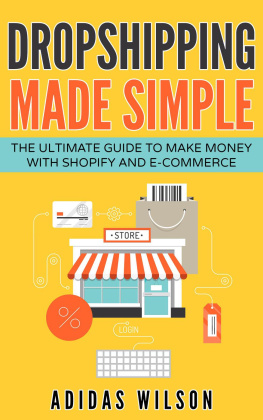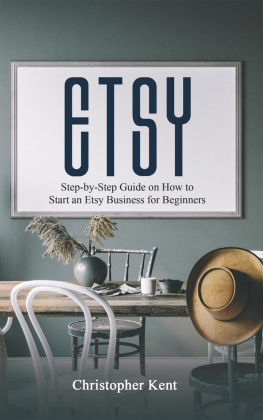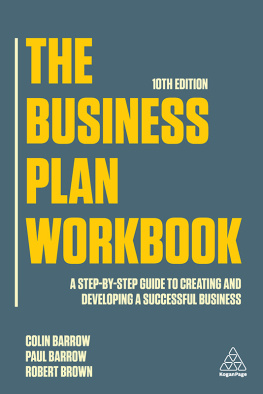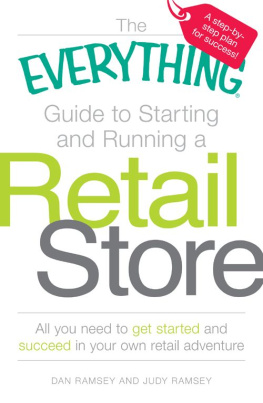
The New Store Workbook
THIRD EDITION
Museum Store Association
Celebrating 58 years, the Museum Store Association is a nonprofit, international association organized to advance the success of nonprofit retail and of the professionals engaged in it. By encouraging high standards of professional competence and conduct, MSA helps nonprofit retail professionals at museums and cultural institutions better serve their organizations and the public. MSA supports museum stores and vendor affiliates through publications, annual meetings, regional chapters, networking, and professional resources.
Titles available from the Museum Store Association
The New Store Workbook, Third Edition, revised with new content in 2015 by Susan DeLand, DeLand Consulting, Long Beach, CA.
Museum Store: The Managers Guide, Fourth Edition, revised with new content in 2015 by Susan DeLand, DeLand Consulting, Long Beach, CA.
Museum Store Association Retail Industry Report, 2014 Edition
Marketing Cultural and Heritage Tourism, Rosemary Rice McCormick
Numbers by the Book, Gwen Benner, Lauren Chapin Salazar, Susan DeLand, David A. Duddy, Mary Hele, Laura Murphy, Sallie Stutz, Valerie Troyansky
The New Store Workbook
The Essential Steps from Business Plan to Opening Day
THIRD EDITION
| Museum Store Association 3773 E. Cherry Creek Dr. North, Suite 755 Denver, CO 80209 www.museumstoreassociation.org |
First published 2015 by Left Coast Press, Inc.
Published 2016 by Routledge
2 Park Square, Milton Park, Abingdon, Oxon OX14 4RN
711 Third Avenue, New York, NY 10017, USA
Routledge is an imprint of the Taylor & Francis Group, an informa business
Copyright 2015 Museum Store Association
All rights reserved. No part of this book may be reprinted or reproduced or utilised in any form or by any electronic, mechanical, or other means, now known or hereafter invented, including photocopying and recording, or in any information storage or retrieval system, without permission in writing from the publishers.
Notice:
Product or corporate names may be trademarks or registered trademarks, and are used only for identification and explanation without intent to infringe.
Library of Congress Cataloging-in-Publication Data:
The new store workbook : the essential steps from business plan to opening day / Museum Store Association. Third edition.
pages cm
ISBN 978-1-62958-033-3 (pbk. : alk. paper) ISBN 978-1-62958-034-0 (consumer ebook)
1. Museum stores--Management. 2. New business enterprises--Management. I. Museum Store Association (U.S.)
HF5469.65.N485 2015
658.87--dc23
2015001559
Text design by Lisa Devenish
ISBN 978-1-62958-033-3 paperback
Contents
Go to www.museumstoreassociation.org to access all sample forms and spreadsheets.
Note: In this edition, museum is used as a generic term for all types of nonprofit cultural stores.
Who are you and how do you begin?
Elements of the business plan
You are about to become a planner and a visionary. Its a powerful combination built of research, knowledge, metrics, and imagination. This book will be a valuable tool in building your store; each chapter will break down essential steps into manageable tasks. There are many ways for a store to be new, but this book primarily approaches the planning as a new project, built from the ground up. You will be able to pull applicable information as it meets your needs. Regardless of the size and complexity of your new store project, consider this book a toolbox.
What Is a New Store?
Never existed: museum and store are being built from the ground up
Never existed: store is being added to a museum that has been in operation
Relocated: from one space to another onsite
Remodeled: major renovation to an existing store
New: building a satellite shop within the museums footprint
New: building a branch in a different location away from the museum
New: temporary pop-up shop
New: online store
Who Makes the Plan?
Your organization has people in place in every department busily making plans to support the overall mission and goals of the museum from their specific perspective. You have one of those perspectives. When it comes to your business plan, begin meeting early with other internal planners.
All of the planning will be more accurate and supportive when you collaborate with other departments.
The exhibition, education, communications, and visitor services departments will be especially important sources of planning information for the new store.

Exhibitions can give you the subjects and schedule of planned exhibitions in the stores opening year.

Education will tell you the programming plans for collections and exhibitions and school group tour planning.

Communications will share the media schedule and emphasis on exhibitions and areas of collections, present the graphics to promote the opening and beyond, and provide language for and timing of store promotion in the museums overall advertising efforts.

Visitor Services will project daily and yearly attendance numbers, visitor traffic patterns, plans for targeting tour groups, visitor demographics, and hours of operation.
A business plan is critical to the successful opening of a new store or the expansion of an old one. The business plan tells the story of the store and provides a map to a successful business. This is where all the concepts, strategies, and ideas are committed to paper. Ideas are fuzzy and incomplete; putting them in writing brings it all together. You might say that a store without a business plan is like a play without a script.
Key components of a good plan include:
Executive Summary (placed first, but written last)
The Story: a description of your parent organization and the vision for the new store, including mission and vision statements and the core values that will guide the business
Market research within your industry and geographic location
Sales plan
Marketing strategy
Financial projections
Business plans have many applications, but this book is about opening a store, so the plan will be tailored to that purpose. This plan is the solidification of ideas that must precede any actual construction, purchasing of inventory, or hiring of staff. Business plans in the museum store industry are usually necessary to obtain funding. In most cases, the funding comes from the museums capital budget, and a logical and reasonable case must be made to access the money. The board of directors and/or trustees will expect to see a comprehensive and realistic plan to approve the expenditure of the money. Since the store is one of the few revenue-generating departments, there will be an expectation of a detailed cost analysis through the entire project and beyond. Being a revenue generator is a strength. The store, unlike some departments, has the potential of recouping the start-up monies and then contributing beyond the investment. Essentially, the board of directors is like a bank; you have to sell them on the benefits of making the investment.












 Exhibitions can give you the subjects and schedule of planned exhibitions in the stores opening year.
Exhibitions can give you the subjects and schedule of planned exhibitions in the stores opening year.